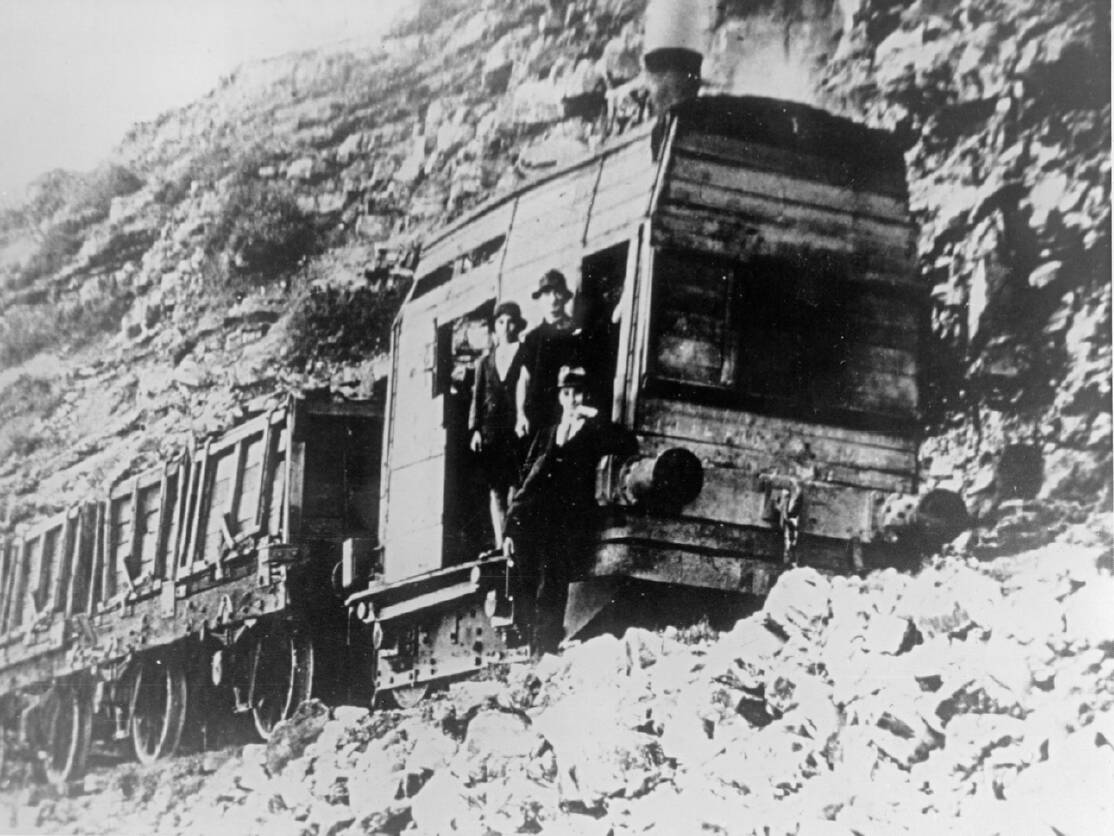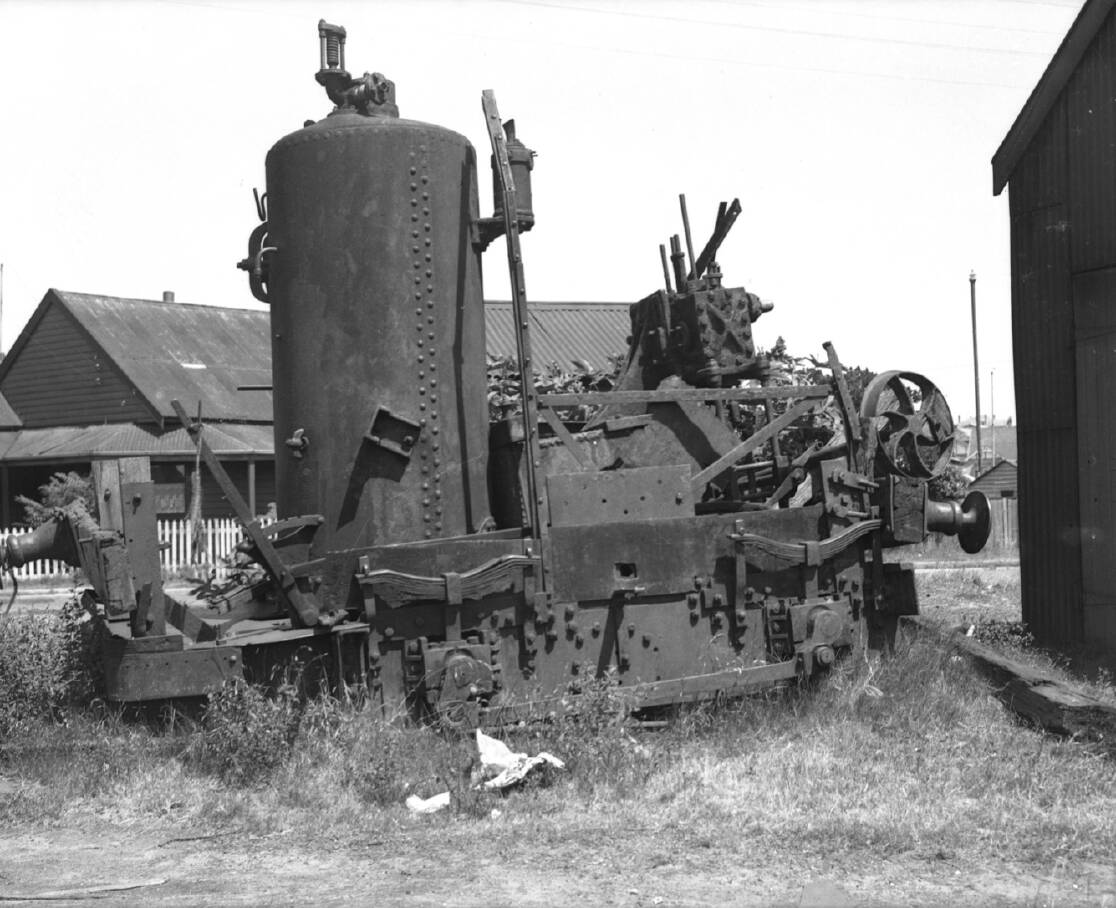
ALL suburbs have their secrets, and The Junction, near Merewether, has more than most.
For a start, the heart of the area, where the artery of Glebe Road intersects Watkins Street opposite the Eastpoint complex, often wasn't even called that. It was called Howley's Junction after mine operator Thomas Howley. He ran the Glenrock Colliery, by the lagoon, with coal trains trundling along an historic oceanfront line between 1910 and 1942. It had two tunnels, now long gone, in the cliff face.
The railway was also famously known as the "Coffee Pot" train because its odd-shaped loco was a vertical boiler and engine housed in a big box. Second-hand, it came from Toronto where it worked for weekend picnic service between 1899 and 1909. Before that, it started life in 1887 as the power unit of a Sydney tramcar.
The Junction acquired its name because originally four railway lines ran into it. Finally, there were only two lines and then there were none after August 1954. That's when the last train hauling coal and servicing four small pits around Glebe Valley (below present City Road) ceased operation.
Looking at the area today, a newcomer might never guess how much it's been redeveloped. Only the war memorial at The Junction traffic lights seems unchanged. The rail track is long gone. The once landmark Hunter/Star theatre has been demolished as has the Junction Fiveways garage that stood next door for 53 years since 1936. No trace survives of the narrow coal railway that once ran between the two sites, then down through Cooks Hill, and across Civic Park to the waterfront.
Residents with long memories might also recall the old bakery at The Junction, in Kenrick Street, which existed for 100 years before moving to Bennetts Green about 1973. The old site, from memory, became today's Hunter Village.
There were stables everywhere, mainly for horses hauling bread carts around the district with their drivers standing high at the rear, holding the reins like charioteers. And who from that era can forget when a Sabre Jet exploded over The Junction in August 1966? Miraculously, only one life, that of the pilot, was lost that night.
As for traces of the old railway, the early 'Howley's Junction' is unrecognisable to what it once was. Gone are the area's signal box, a windmill and a big locomotive water tank (for steam trains) fed from water in a nearby big pond down in Bar Beach Avenue (where a stormwater drain now exists). There was even a passenger platform for occasional picnic trains to Glenrock Lagoon.
Modern Merewether also didn't exist initially. Instead it was simply called Burwood, or the Burwood Estate run by E.C. Merewether.

A little further west, where coal trains hauled wagons down Railway Street, two pubs (the Mary Ellen and the Prince of Wales, which both still exist) were built. About 12 potteries were connected by the Junction rail network, according to coal historian and author, the late John Weller Shoebridge, of Dora Creek. In 2017, I stood beside Shoebridge outside the Arrivederci restaurant (now the Grumpy Baker site) as he pointed out two parallel brick lines in the extended footpath. The lines indicated where the route of the old Watkins Street railway once ran across Glebe Road.
"There was a tourism idea here to re-create this part of the rail route using solar bricks which, when heated, would have glowed at night. Unfortunately, that didn't proceed," he revealed.
This same area in Watkins Street was also famous for a popular summer riding school every weekend in the 1950s. Behind the cafe site was a triangle of land stretching along the back of Junction Primary School. Everyone simply knew it as Tracey's. There then was a big tin shed smelling of leather and hay where riding gear was stored. Here, there were lots of horses and ponies from Wal Tracey available for kids to hire for a few bob every Saturday afternoon.
Soon these urban cowboys, a "chattering, fly-swatting group of 30 or more clip-clopped along the roads" down Glebe Road to Darby Street, then make their way on a big circuit via King Street to Union Street, then to The Junction and home. Luckily, in that era, most stores closed at noon and there were few motorists on the road.
Back at base, the "cowboys" began unsaddling the horses before the children clustered around Tracey as if he were Santa Claus as he returned part of their money to be soon spent on ice creams, lollies and drinks at corner shops.
But Tracey's tin shed site also held a secret, or two. According to Hunter historian John Shoebridge again, there were really four locomotives working Howley's short coastal railway south of Merewether over 32 years from 1910. They were generally all referred to as 'Coffeepots' though after Thomas Howley's first engine unit that carried the nickname 'Coffee Pot'.
This itself lasted for 15 years until 1925 until the weatherboard cabin loco was retired to rail sidings in Watkins Street. One after another, new locos took over on the basic coal line. Then Tom Howley died in 1942 at the age 86.
Within two years, and despite the World War 11 demand for coal, Glenrock Colliery closed, the rails were lifted and sold for scrap. Shoebridge wrote that BHP Collieries, which still held the mining leases, blocked the rail tunnels with concrete seals. The shorter of the two timber-lined tunnels was set alight by vandals and had to be destroyed by explosives.
The little locomotive shed (now gone) in Watkins Street suffered the final indignity of being used as a horse stable. Inside, beneath chaff bags, was rumoured to be a mystery derelict loco.
Rather weirdly, Shoebridge said the abandoned, original 'Coffee Pot' loco sat forgotten nearby, but outside the tin shed for about 25 years until 1949-50.
Soon after it had arrived to work the Merewether line (in 1910), the wooden cab had been further crudely altered (tapered at the top) to fit through the two coastal tunnels. They were so narrow that both the loco driver and fireman would step out to allow the coal train to slowly chug through by itself.
Later locals recycled the cab for firewood and stripped it of brass fittings. The remains stayed there for years. Shoebridge said the real reason for this might be that no one really knew who owned it.







